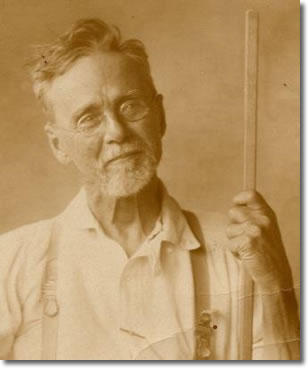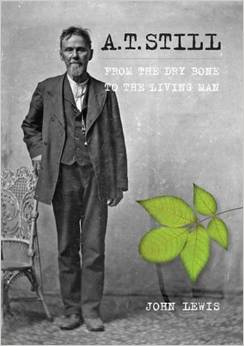Some of the roots of our work…

 I have been reading an amazing biography of A T Still, the father and developer of osteopathy who lived from 1828 – 1917. It is written by John Lewis, an osteopath who lived in Kirsville, Missouri, reaseaching Still's life for four years and drawing together a myriad of resources to compile this book. There is often treasure to discover in going back to consider the influences and passions of someone who came up with such a radical approach to healthcare and I have to say that I found numerous gems! I thought the following excerpt was as relevant for us as students of CST as it would have been back then for the trainee osteopaths.
I have been reading an amazing biography of A T Still, the father and developer of osteopathy who lived from 1828 – 1917. It is written by John Lewis, an osteopath who lived in Kirsville, Missouri, reaseaching Still's life for four years and drawing together a myriad of resources to compile this book. There is often treasure to discover in going back to consider the influences and passions of someone who came up with such a radical approach to healthcare and I have to say that I found numerous gems! I thought the following excerpt was as relevant for us as students of CST as it would have been back then for the trainee osteopaths.
From notes on a conversation with one of Still's students, they said:
'Cultivating the right mental attitude was only the beginning… Still’s extraordinary results depended not only upon anatomical erudition and skilled hands but also upon the development of latent mental faculties. The mind was a potent tool to hone for mastery of the art of osteopathy. The first step was to perfect the art of visualization. Still insisted that his students retain in their minds a ‘living picture’ of every part of the body, as an artist would paint a face or scene from memory.
'He explains his thought processes when assessing a new patient: ’I am listening to her story and while listening I am seeing in my mind’s eye the combinations of systems which go to make up the whole body structure.’
'And of supreme importance was the way Still visualized – from the perspective of the cell and its requirements for normal function. He studied nature always from the inside, the heart, and as a subject, not an object. He looked from the creative angle. Nature was always intelligent, dynamic, in constant flux. He did not think by the book but by the moving event, and that is just about all the difference in the world.
'He made himself 'en rapport' with the body he studied: he tried to be that bone, live in the liver, he thought as a measle, he put himself inside that spleen or the greater trochanter, to feel its operation as a part of the great unity of action and of logic and of life that was that body. So conscientiously did Still train this power of visualization that he saw conditions and processes as a whole and by this ability could pick out the mechanical key to the disturbed function that the patient recognized only as discomfort or disease.
'He noted that the most successful practitioners were those without impressive scholastic qualifications but who worked for and obtained intuitive consciousness; those who learned to blend thinking with sensing, knowledge with intuition. We should not be satisfied to know that we are right, he said, but feel so and act with energy to suit, and our successes will grow with time.'
While this does differ a little from our CST approach there are disctict similarities and both these teachers shared the deep belief in the body itself, the Inner Physician for Dr John, Nature itself for Still, to hold within it all the necessary keys for optimum health!
 A.T Still: From the Dry Bone to the Living Man by John Lewis. Dry Bone Press 2012
A.T Still: From the Dry Bone to the Living Man by John Lewis. Dry Bone Press 2012
